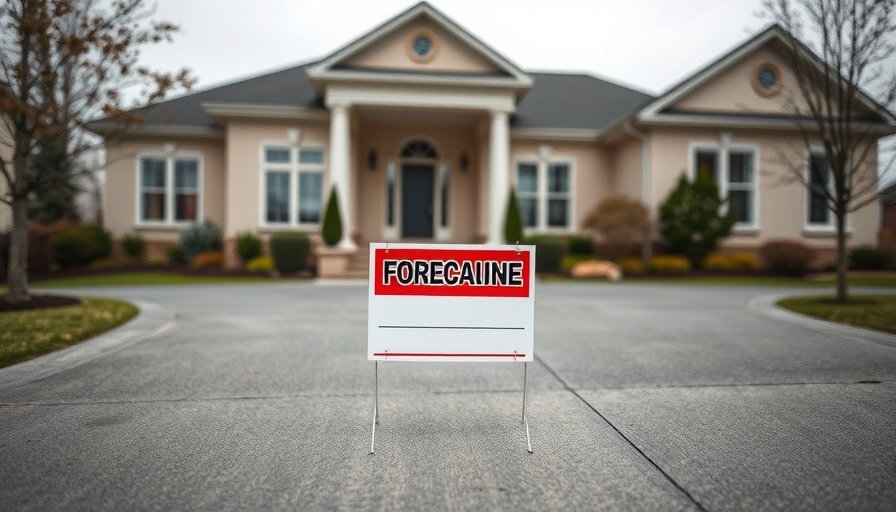
Understanding Bankruptcy and Home Ownership
Filing for bankruptcy can be a daunting experience, especially when you're worried about keeping your home. While bankruptcy is designed to help you manage your debt, its effects can vary greatly depending on your individual circumstances, particularly the type of bankruptcy you pursue and the amount of equity you have in your home.
Bankruptcy often provides homeowners with temporary relief, allowing them space to catch up on mortgage payments or negotiate better terms with lenders. It's vital to grasp the nuances of the process, as this knowledge will empower you to make informed decisions about both your financial future and your property.
What Bankruptcy Can Do for Homeowners
Bankruptcy is not a one-size-fits-all solution; however, it can offer significant benefits during tough financial times, particularly for homeowners. Here are a few critical advantages:
- Automatic Stay: At the moment of filing, bankruptcy invokes an automatic stay that halts most collection processes, including foreclosure. This stay provides essential breathing room for homeowners to strategize their next moves.
- Debt Discharge: By discharging various unsecured debts, homeowners can focus their finances on keeping up with their mortgage payments, potentially preventing foreclosure.
- Chapter 13 Plans: Particularly for Chapter 13 bankruptcy, homeowners may have the opportunity to catch up on overdue payments through a structured repayment plan.
Critical Limitations of Bankruptcy
While bankruptcy can offer many benefits, it is important to be aware of its limitations:
- No Elimination of Mortgage Debt: Bankruptcy does not erase mortgage debt. You will still be responsible for this debt unless the home is sold or the mortgage is renegotiated.
- Temporary Relief Only: The automatic stay is only temporary. Creditors can petition the court to lift this stay, which can lead to foreclosure if mortgage obligations remain unmet.
- State Laws and Exemptions: Your ability to retain your home may depend on state laws governing home equity protection. Some states have stronger protections than others, impacting homeowners’ security.
Utilizing Legal Protections Throughout Bankruptcy
Understanding and navigating the various legal protections available can significantly improve your chances of retaining your home despite financial hardships. Key components include:
The Automatic Stay Explained
As soon as you file for bankruptcy, the court enforces an automatic stay, which immediately halts all collections, including foreclosure proceedings. This legislation is designed to protect you, giving you the opportunity to regroup, consider your options, and potentially negotiate with your lender.
However, remember that the automatic stay is not indefinite. Its duration depends on the progression of your bankruptcy case. Moreover, repeated bankruptcy filings may lead to the court denying stays, allowing lenders to proceed with foreclosure.
Homestead Exemptions: A Safety Net for Homeowners
Many states offer homestead exemptions that protect a certain portion of your home equity from creditors during bankruptcy. Depending on where you live, these exemptions can vary significantly—they might cover only a small amount, or, conversely, provide broad protection. Homeowners must evaluate their equity and state laws to understand how well-protected their properties are.
Future Trends in Debt Management for Homeowners
The landscape of debt management is evolving, especially as more individuals face financial duress. Key trends are emerging in debt strategies that can impact homeowners:
- Debt Consolidation: Homeowners are increasingly turning to debt consolidation solutions to combine multiple debts into one manageable payment, which can lead to lower interest rates.
- Financial Counseling: Seeking guidance from financial advisors or credit counseling services is becoming more commonplace, helping homeowners craft personalized strategies for debt management.
- Utilizing Technology: Debt management apps are gaining traction, allowing individuals to track spending and manage debts more effectively, providing tools to avoid past mistakes.
Actionable Insights for Homeowners
If you are facing the possibility of bankruptcy, there are steps you can take to ensure that you are adequately prepared:
- Educate Yourself: Always remain informed about your legal rights and options. Knowledge is your best ally in these situations.
- Evaluate Your Equity: Assess how much equity you have in your home and how state laws impact your situation.
- Communicate with Lenders: Open a dialogue with your mortgage lender. In many situations, they may be willing to negotiate forbearance or other options.
- Consider Counseling Services: Exploring debt counseling services can provide you with additional perspectives and strategies tailored to your unique circumstances.
Conclusion: Take Control of Your Financial Future
As you consider your options, remember that bankruptcy can offer a lifeline, but it’s not a miracle cure. Understanding the nuances and potential outcomes are paramount to making the right choices. Taking proactive steps and leveraging available resources will help you navigate this challenging time and work towards a more secure financial future. Always explore all your options and consult with professionals as needed.
For those facing debt challenges, don't hesitate to reach out to a professional for advice. By taking informed steps now, you can pave the way to financial recovery and homeownership stability.
 Add Row
Add Row  Add
Add 



Write A Comment